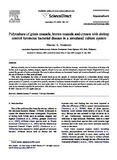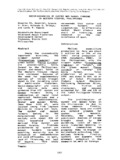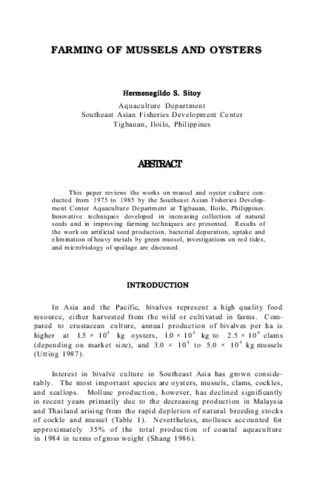Perlihatkan publikasi sederhana
Oyster and mussel farming in Western Visayas, Philippines
| dc.contributor.author | Samonte, Giselle P. B. | |
| dc.date.accessioned | 2019-03-24T05:52:32Z | |
| dc.date.accessioned | 2021-01-05T01:36:11Z | |
| dc.date.available | 2019-03-24T05:52:32Z | |
| dc.date.available | 2021-01-05T01:36:11Z | |
| dc.date.issued | 1992 | |
| dc.identifier.citation | Samonte, G. P. B. (1992). Oyster and mussel farming in Western Visayas, Philippines. Naga, 15(3), 46-48. | en |
| dc.identifier.uri | https://hdl.handle.net/20.500.12348/3023 | |
| dc.description.abstract | The slipper oyster (talaba) and the green mussel (tahong) are the only mollusc species farmed in the Philippines. They are farmed for their meat, and consumption is mainly for the domestic market. The Western Visayas region, situated in central Philippines (Fig. 1), is one of the major sources of oysters and mussels. Natural population of oysters and mussels along rivers and bays and the need to augment income from fishing have led to the proliferation of oyster and mussel farms. Their farming started as early as the 1950s. Today, an estimated 2,000 coastal families engage in mollusc farming in the region. | |
| dc.language.iso | en | en |
| dc.publisher | International Center for Living Aquatic Resources Management | |
| dc.subject | mussels | en |
| dc.title | Oyster and mussel farming in Western Visayas, Philippines | en |
| dc.type | magazineArticle | en |
| dc.citation.volume | 15 | |
| dc.citation.issue | 3 | |
| dc.citation.spage | 46 | |
| dc.citation.epage | 48 | |
| dc.citation.journalTitle | Naga | |
| dc.subject.asfa | oysters | en |
| dc.subject.asfa | oyster culture | en |
| dc.subject.asfa | mussel culture | en |
| dc.subject.asfa | shellfish culture | en |
| dc.subject.asfa | shellfish | en |
Files in this item
| Files | Size | Format | View |
|---|---|---|---|
| na_2114.pdf | 367.4Kb | application/pdf | View/ |




